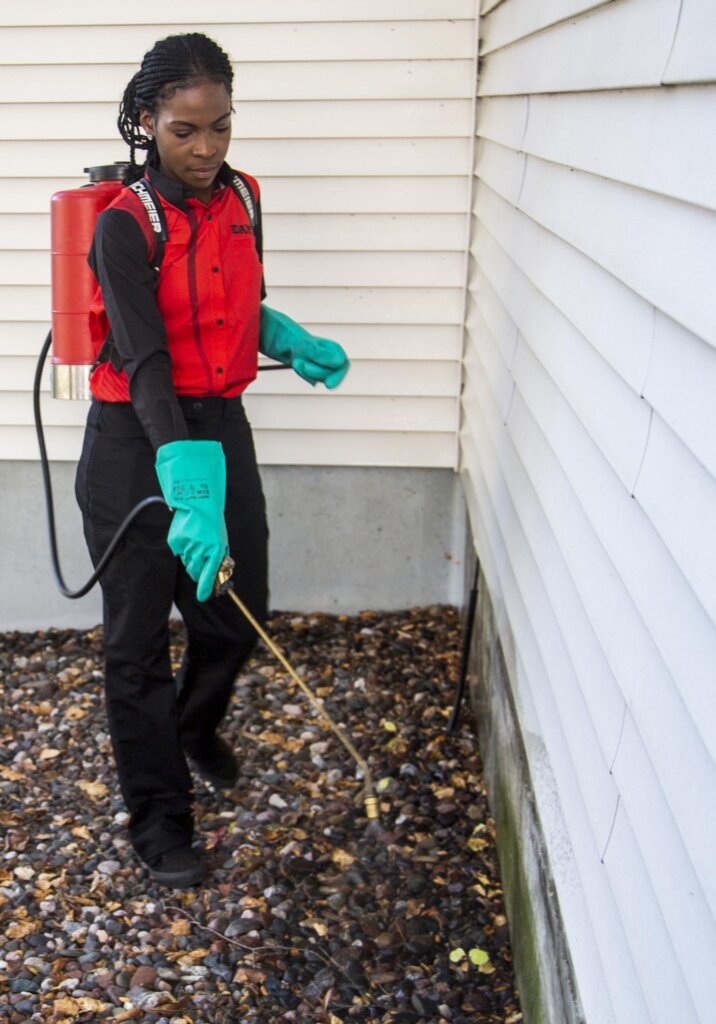Reliable A1 Bed Bug Treatment in Charlotte - Safe and Proven Approaches
Reliable A1 Bed Bug Treatment in Charlotte - Safe and Proven Approaches
Blog Article
Bed Insect Therapy Malfunction: Contrasting Chemical Vs. Non-Chemical Solutions
In the world of bug control, particularly when managing the relentless issue of bed bugs, the selection in between chemical and non-chemical therapy options can be a pivotal one. Both strategies use unique advantages and drawbacks, influencing aspects such as performance, safety and security considerations, and overall cost. By analyzing the nuanced information of each approach, a clearer understanding of which course to pursue in dealing with a bed insect infestation can be achieved.
Efficiency of Chemical Therapies
Chemical therapies for bed bug infestations have actually been commonly recognized for their potent and fast effectiveness in removing these pests. When thinking about the efficiency of chemical treatments, it is vital to comprehend that they can give a detailed and quick option to a bed bug problem. Expert exterminators often count on pesticides to target bed pests at numerous stages of their life process, including adults, nymphs, and eggs. These chemicals generally work by disrupting the bed insects' nerves, leading to paralysis and eventual death.
Furthermore, chemical therapies have the advantage of offering residual impacts, meaning that they can remain to eliminate bed bugs even after the initial application. This recurring activity is specifically helpful in combating any prospective re-infestations. Additionally, the fast action of chemical therapies can bring relief to people dealing with serious bed bug invasions, allowing them to gain back control of their home quickly.
Safety Concerns With Chemical Solutions
One critical facet that requires careful consideration when using chemical options for bed pest therapy is making certain the safety and security of occupants and the environment. Exposure to certain chemicals utilized in bed insect treatments can lead to respiratory issues, skin irritation, or other adverse reactions, especially in people with pre-existing problems or level of sensitivities.
Moreover, the ecological impact of chemical remedies is an additional significant consideration. Some pesticides utilized in bed insect treatments may be harmful to advantageous bugs, wild animals, and ecosystems if they seep right into the dirt or water supply. It is necessary to utilize chemical therapies judiciously, following safety and security guidelines, and thinking about less toxic options to alleviate these threats and make certain the safe and effective administration of bed bug invasions.
Benefits of Non-Chemical Methods
Thinking about the potential safety and security problems and ecological effect associated with chemical options for bed bug therapy, discovering non-chemical approaches offers an appealing choice with a number of distinctive advantages. Non-chemical therapies are eco pleasant, as they do not contribute to air or water air pollution, making them a sustainable option for insect control.
Furthermore, non-chemical remedies can be efficient in targeting bed insects, including hard-to-reach locations where chemical therapies might not permeate. Approaches such as warmth treatment, vacuuming, vapor cleaning, and mattress encasements supply comprehensive obliteration without using unsafe chemicals. Furthermore, non-chemical strategies can be much less turbulent, requiring marginal prep work and enabling for quicker reentry into treated locations. Generally, selecting non-chemical bed pest therapy approaches not just focuses on safety and ecological defense but also guarantees official website comprehensive and efficient pest control.
Limitations of Non-Chemical Treatments

Additionally, non-chemical therapies typically require numerous applications to attain effective eradication. This can be lengthy and their explanation may not constantly ensure complete removal of all bed bugs and their eggs, especially in concealed or hard-to-reach locations.
In addition, the success of non-chemical therapies heavily depends on proper implementation and thoroughness, which can be challenging for individuals without expert knowledge. Inadequate application of non-chemical techniques may lead to insufficient removal, leading to persistent infestations and the requirement for additional therapies.
Therefore, while non-chemical therapies have their advantages, it is vital to recognize these restrictions and consider them when identifying one of the most reliable strategy for taking care of bed insect infestations.
Expense Comparison: Chemical Vs. Non-Chemical Options
Given the constraints associated with non-chemical therapies, an important facet to evaluate in the context of bed bug management is the price contrast between chemical and non-chemical options. In comparison, non-chemical treatments like heat treatment or heavy steam can be extra expensive, with costs ranging from $1,000 to $6,000 for an entire home. While the preliminary price of chemical therapies might seem lower, several therapies may be required to fully remove the invasion, possibly raising the total price.
Conclusion

Thinking about the possible safety concerns and ecological influence connected with chemical remedies for bed bug treatment, discovering non-chemical approaches provides an encouraging alternative with several unique advantages.Offered the limitations connected with non-chemical treatments, a necessary aspect to assess in the context of bed insect monitoring is the cost comparison in between chemical and non-chemical options. In contrast, non-chemical treatments like warm therapy or heavy steam can be extra expensive, with costs ranging from $1,000 to $6,000 for an entire home. While the preliminary expense of chemical therapies might appear reduced, numerous therapies may be required to fully remove the problem, possibly boosting the total price.In verdict, when contrasting chemical and non-chemical bed pest therapy alternatives, it is essential to consider effectiveness, safety, benefits, limitations, and cost.
Report this page